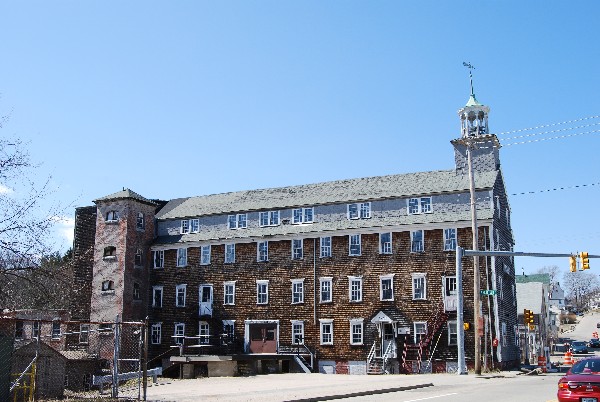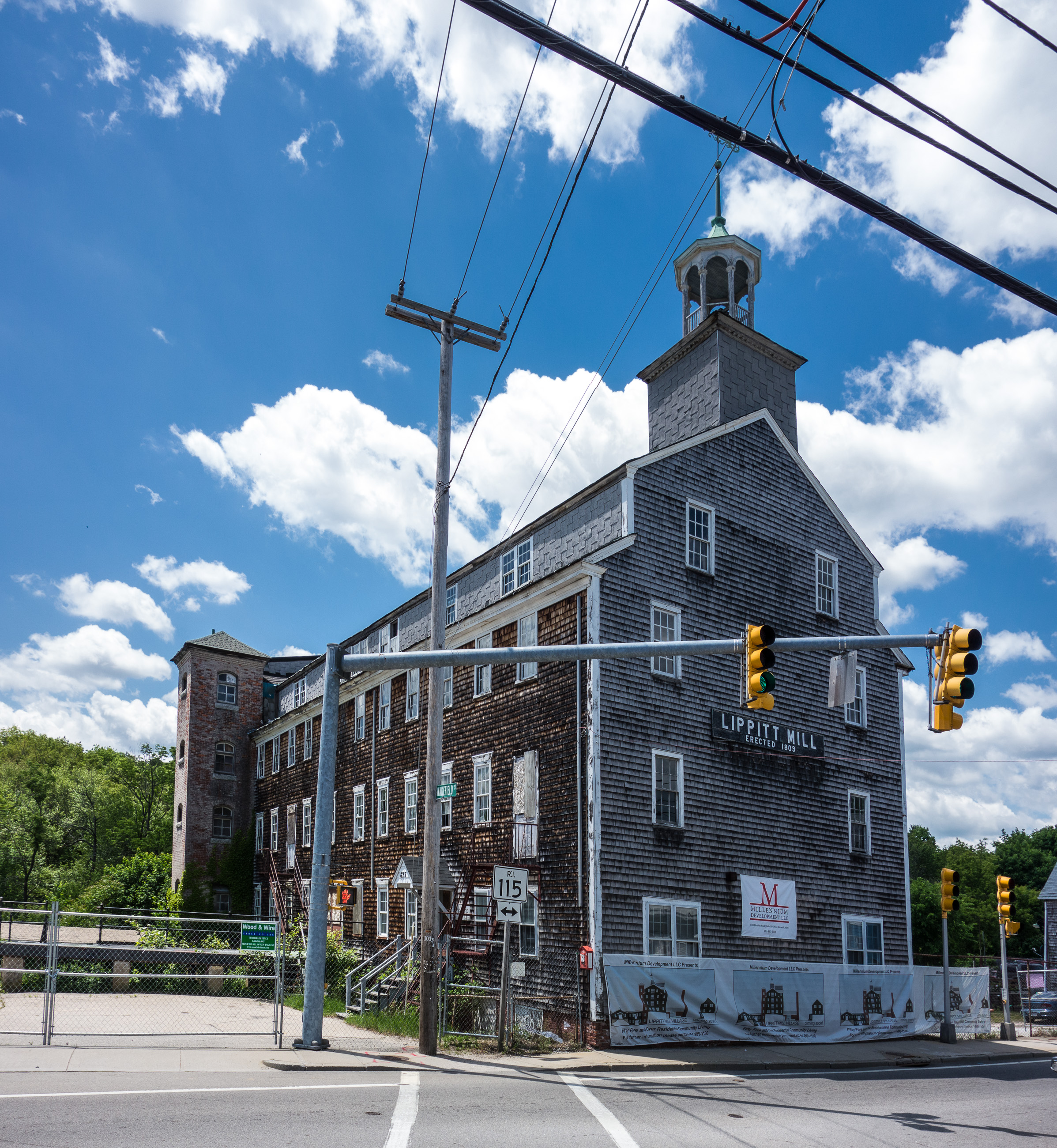|
Lippitt, Rhode Island
Lippitt, Rhode Island is a village within the town of West Warwick, Rhode Island. History Lippitt was founded by Revolutionary War General Christopher Lippitt and his brother Charles Lippitt when they and their partners constructed Lippitt Mill in 1809 and the surrounding mill village for their workers. During the Depression following of War of 1812, the Lippitt Manufacturing Company survived by supplying yarn to convict weavers in the Vermont prison. The original mill and several of the workers row houses still survive. It is one of the oldest cotton mills in New England and has been sold to several owners since the Lippitt family sold it 1889. The Mill is on the National Register of Historic Places, and is one of the earliest textile mills in Rhode Island. It is one of the oldest American textile mills still used for manufacturing. References {{authority control V ... [...More Info...] [...Related Items...] OR: [Wikipedia] [Google] [Baidu] |
West Warwick, Rhode Island
West Warwick is a town in Kent County, Rhode Island, United States. The population was 31,012 at the 2020 census. West Warwick was incorporated in 1913, making it the youngest town in the state. Prior to 1913, the town, situated on the western bank of the Pawtuxet River, was the population and industrial center of the larger town of Warwick. The town split because local Democratic politicians wanted to consolidate their power and isolate their section of town from the Republican-dominated farmland in the east. History The area that is now the town of West Warwick was the site of some of the earliest textile mills in the United States situated along the banks of the north and south branches of the Pawtuxet River. These small mill villages of the would play an important role in the early development of the textile industry in North America. Lippitt Mill founded in 1809 by Revolutionary War hero, Christopher Lippitt, was one of the first mills in the area. The 1810 Lippit ... [...More Info...] [...Related Items...] OR: [Wikipedia] [Google] [Baidu] |
Christopher Lippitt
Christopher Lippitt (October 28, 1744 – June 17, 1824) was a prominent Revolutionary War officer and founder one of the earliest textile mills in Rhode Island. Early life Lippitt was the fourth child of Christopher Lippitt (1712–1764) and Catherine (Holden) Lippitt and the oldest surviving son at the time of his father's death in 1764. Since 1715 the Lippitt family had owned Lippitt Hill in the Hope neighborhood in the southwestern part of Cranston, Rhode Island. Lippitt was first elected to General Assembly at age 21 and continued serving until Revolution. At age 22 made captain of militia and Justice of the Peace.James N. Arnold, ''The Narragansett Historical Register'' (Heritage Books, 1998), pg. 111-113 https://books.google.com/books?id=CuuicaMM3KEC&source=gbs_navlinks_s Lippitt owned a sawmill and a farm and was recorded as having six slaves in the 1774 census and two slaves in 1790 census. Service in Revolution During the American Revolution in January 1776, Lippitt was ... [...More Info...] [...Related Items...] OR: [Wikipedia] [Google] [Baidu] |
Lippitt Mill
The Lippitt Mill is an historic mill at 825 Main Street in West Warwick, Rhode Island. History The cotton textile mill was built in 1809, making it the third oldest in Rhode Island after John Slater's Mills in Slatersville, RI and Samuel Slater Slater Mill. The Lippitt Manufacturing Company was founded by Revolutionary War officer, Col. Christopher Lippitt, his brother Charles Lippitt, and Benjamin Aborn, George Jackson, Amasa Mason, and William Mason. During the Depression following of War of 1812 the Lippitt Manufacturing Company survived by supplying yarn to convict weavers in the Vermont prison. The company grew throughout the 19th century becoming a large profitable enterprise in which several generations of the Lippitt family were involved. In 1889 all of the Lippitt Company assets were sold to the firm of B.B. Knight & Robert Knight, founders of Fruit of the Loom. In 1925, B.B. Knight sold the Lippitt Mill property to Joseph Hayes, owner of the Riverpoint Lace Works. Th ... [...More Info...] [...Related Items...] OR: [Wikipedia] [Google] [Baidu] |
Vermont
Vermont () is a state in the northeast New England region of the United States. Vermont is bordered by the states of Massachusetts to the south, New Hampshire to the east, and New York to the west, and the Canadian province of Quebec to the north. Admitted to the union in 1791 as the 14th state, it is the only state in New England not bordered by the Atlantic Ocean. According to the 2020 U.S. census, the state has a population of 643,503, ranking it the second least-populated in the U.S. after Wyoming. It is also the nation's sixth-smallest state in area. The state's capital Montpelier is the least-populous state capital in the U.S., while its most-populous city, Burlington, is the least-populous to be a state's largest. For some 12,000 years, indigenous peoples have inhabited this area. The competitive tribes of the Algonquian-speaking Abenaki and Iroquoian-speaking Mohawk were active in the area at the time of European encounter. During the 17th century, Fr ... [...More Info...] [...Related Items...] OR: [Wikipedia] [Google] [Baidu] |
National Register Of Historic Places
The National Register of Historic Places (NRHP) is the United States federal government's official list of districts, sites, buildings, structures and objects deemed worthy of preservation for their historical significance or "great artistic value". A property listed in the National Register, or located within a National Register Historic District, may qualify for tax incentives derived from the total value of expenses incurred in preserving the property. The passage of the National Historic Preservation Act (NHPA) in 1966 established the National Register and the process for adding properties to it. Of the more than one and a half million properties on the National Register, 95,000 are listed individually. The remainder are contributing resources within historic districts. For most of its history, the National Register has been administered by the National Park Service (NPS), an agency within the U.S. Department of the Interior. Its goals are to help property owners an ... [...More Info...] [...Related Items...] OR: [Wikipedia] [Google] [Baidu] |
Textile Mill
Textile Manufacturing or Textile Engineering is a major industry. It is largely based on the conversion of fibre into yarn, then yarn into fabric. These are then dyed or printed, fabricated into cloth which is then converted into useful goods such as clothing, household items, upholstery and various industrial products. Different types of fibres are used to produce yarn. Cotton remains the most widely used and common natural fiber making up 90% of all-natural fibers used in the textile industry. People often use cotton clothing and accessories because of comfort, not limited to different weathers. There are many variable processes available at the spinning and fabric-forming stages coupled with the complexities of the finishing and colouration processes to the production of a wide range of products. History Textile manufacturing in the modern era is an evolved form of the art and craft industries. Until the 18th and 19th centuries, the textile industry was a household work. ... [...More Info...] [...Related Items...] OR: [Wikipedia] [Google] [Baidu] |
Villages In Kent County, Rhode Island
A village is a clustered human settlement or community, larger than a hamlet but smaller than a town (although the word is often used to describe both hamlets and smaller towns), with a population typically ranging from a few hundred to a few thousand. Though villages are often located in rural areas, the term urban village is also applied to certain urban neighborhoods. Villages are normally permanent, with fixed dwellings; however, transient villages can occur. Further, the dwellings of a village are fairly close to one another, not scattered broadly over the landscape, as a dispersed settlement. In the past, villages were a usual form of community for societies that practice subsistence agriculture, and also for some non-agricultural societies. In Great Britain, a hamlet earned the right to be called a village when it built a church. [...More Info...] [...Related Items...] OR: [Wikipedia] [Google] [Baidu] |





